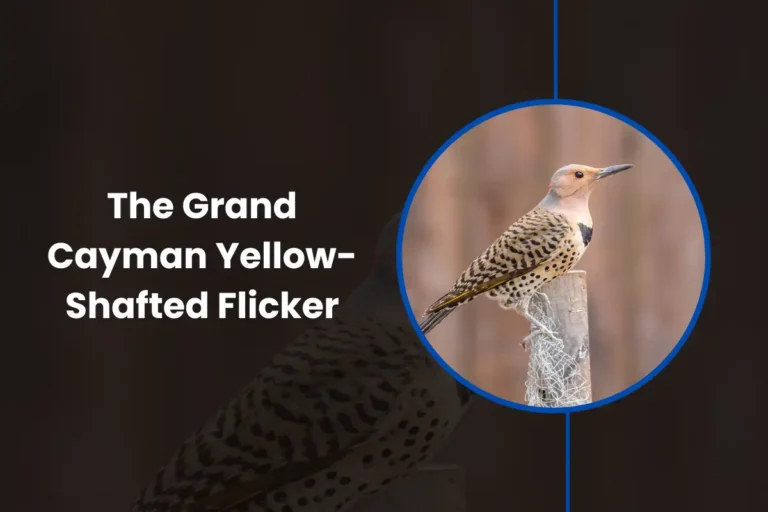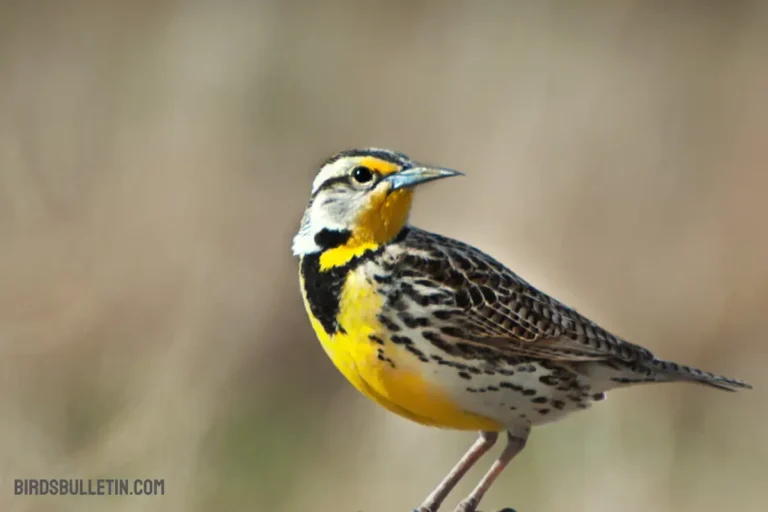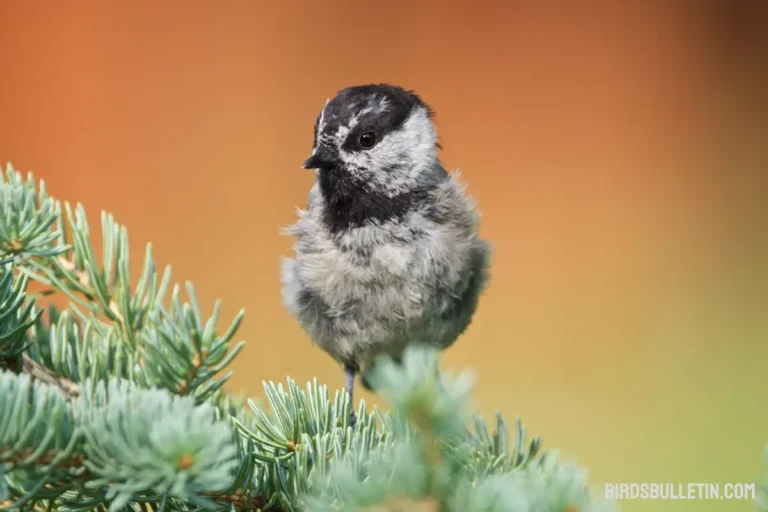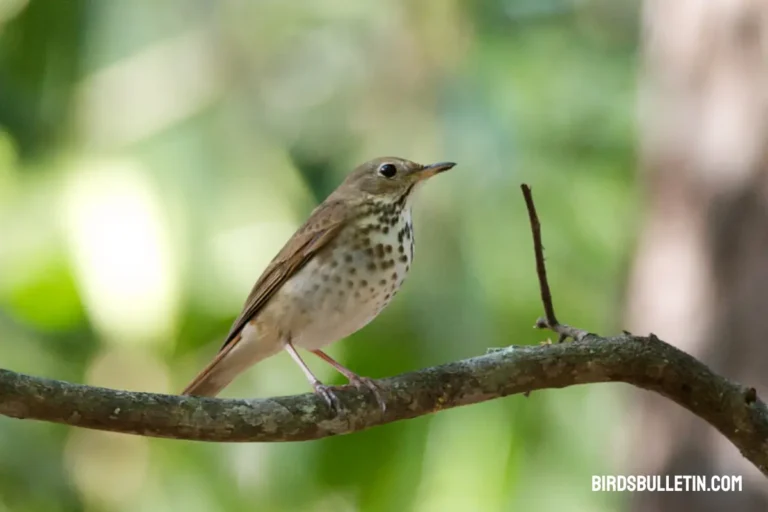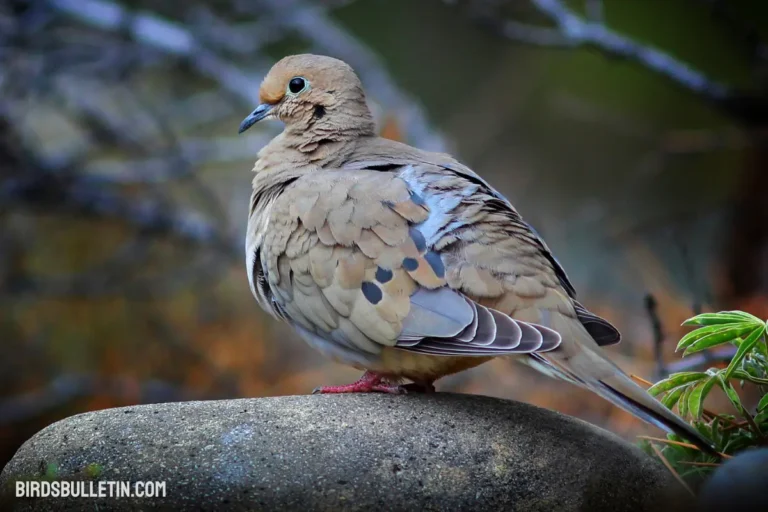Eastern Bluebirds (Subspecies): Behavior And More
Their bright blue backs and rusty red breasts signal spring’s return across eastern North America. Learn to identify these beloved songbirds and create good habitat to attract nesting pairs.
Want to learn more about Birds Overview
Identifying Eastern Bluebirds
Identifying Eastern Bluebirds (Sialia sialis) involves considering various physical characteristics, behaviors, and habitat preferences. Here are some key features to help you identify Eastern Bluebirds:
01. Size and Shape
- Eastern Bluebirds are small to medium-sized songbirds with a plump body and a relatively short tail.
- They have a straight, thin bill, which is typical for insect-eating birds.
02. Coloration
- Males are brightly colored with a vivid royal blue plumage on the head and back, a rusty or orange-red throat and breast, and a white belly.
- Females are generally duller in color, with more subdued shades of blue and a paler orange-brown breast.
03. Face and Markings
- Both males and females have a distinctive white eyering that contrasts with the darker coloration around the eyes.
- The wings and tail are a deep blue, and the tail may have white markings.
04. Habitat
- Eastern Bluebirds prefer open habitats such as meadows, pastures, and clearings with scattered trees or perches for hunting insects.
- They are often found in areas with short grass where they can spot insects.
05. Song
- The song of the Eastern Bluebird is a sweet, melodious series of musical notes. Both males and females can sing, and they use their songs to communicate and establish territory.
Eastern Bluebird Profile
| Aspect | Information |
|---|---|
| Scientific Name | Sialia sialis |
| Alternative Name | None widely recognized |
| Color | Male: Bright royal blue, orange-red throat and breast; Female: Duller blue, paler breast |
| Size | 6.3 to 8.3 inches (16 to 21 cm) |
| Wingspan | Approximately 10 to 13 inches |
| Weight | About 27 to 34 grams |
| Lifespan | Average 6 to 10 years |
| Breeding Season | February and March are for warmer southern states, March and April are for colder northern states. |
| Lay Eggs | February and March are for warmer southern states, and March and April are for colder northern states. |
| Diet and Prey | Primarily insectivorous, feeding on insects, spiders, and other small invertebrates |
| Threats and Predators | Threats: Habitat loss, severe weather, and pesticide use; Predators: Snakes, raccoons, and larger birds |
| Locations | Eastern North America, ranging from southern Canada to the Gulf of Mexico; Open habitats like meadows and pastures |
State Symbol of Happiness
In Missouri, the Eastern bluebird was designated the official state bird in 1927 because of its prevalence across the state as summer residents. These colorful songbirds were also seen as symbolic of happiness and cheer.
In New York, the legislation naming the Eastern bluebird as the official state bird was signed in 1970. As in Missouri, Eastern bluebirds are found commonly throughout New York during the warmer months before migrating south for winter.
These blue and rust-colored birds epitomize the joy of spring’s revival after cold winters for many across eastern North America. Seeing the season’s first flash of vibrant blue is considered good fortune by generations. Bluebirds signify happiness and blessings.
Subspecies Of Eastern Bluebird
Here is a rewritten version of the information about the subspecies of the eastern bluebird:
The eastern bluebird (Sialia sialis) is a species that belongs to the genus Sialia, which was established in 1827 by the English naturalist William John Swainson. S. sialis is the type species for this genus.
There are seven recognized subspecies of the eastern bluebird:
01. Sialia sialis sialis – Found in south and southeast Canada, east-central United States, and northeast Mexico
02. Sialia sialis bermudensis – Native to Bermuda
03. Sialia sialis nidificans – Found in east-central Mexico
04. Sialia sialis fulva – Ranges from southwest United States to central Mexico
05. Sialia sialis guatemalae – Occurs in southeast Mexico and Guatemala
06. Sialia sialis meridionalis – Occurs in El Salvador, Honduras and north Nicaragua
07. Sialia sialis caribaea – Found in east Honduras and northeast Nicaragua
Nesting cycle Patterns
Here are some key details about the nesting cycle and patterns of the Eastern Bluebird:
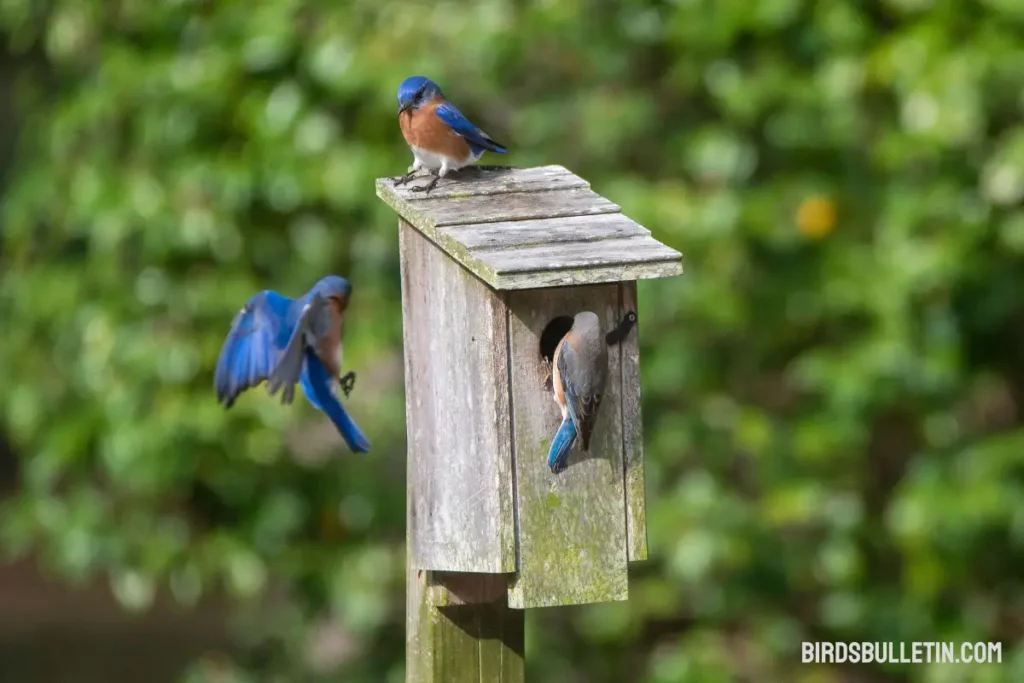
Nesting Season: They start nesting fairly early, with activity beginning in late March or April across most of their range. The overall nesting season lasts through late summer (August).
Number of Broods: Eastern Bluebirds typically raise 2-3 broods per breeding season. The female lays about 4-5 eggs per clutch.
Nest Location: They are cavity nesters, nesting in tree hollows or old woodpecker holes. They also readily use human-provided nest boxes. The nest is built from grasses and pine needles.
Incubation & Fledging: Only the female incubates the eggs, for about 12-14 days. The chicks fledge the nest at around 15-20 days old.
Care of Young: The female broods and feeds the hatchlings initially. But both parents bring food and care for the fledglings, feeding them for several weeks after leaving the nest.
Nesting Dispersal: Females often disperse farther distances than males between nesting attempts to reduce competition for cavities. But in general, they show nest site fidelity, often reusing a successful nesting site in subsequent years.
Population Trends Reflect Nest Site Availability
The Eastern bluebird has a wide range and large overall population size across North America, though its populations did decline in the early 20th century before rebounding. Here are some key statistics on Eastern bluebird numbers and population trends:
Total Population Estimate: There are estimated to be between 20-23 million Eastern bluebirds across their entire range.
Population Trend: Populations reached very low levels by the 1960s but have increased significantly since then due to nest box programs and other conservation efforts. Their numbers today are estimated to be double what they were in the 1960s.
Range: They are found across the eastern half of the United States, from southern Canada south to Mexico and Guatemala. Their range covers 49 U.S. states.
State Populations: Some example statewide breeding population estimates are 140,000-200,000 pairs in Missouri, 250,000-500,000 pairs in Arkansas, and over 2 million pairs estimated to nest in Texas.
Movement Patterns Tied to Seasons
Migration Pattern: Eastern Bluebirds are short-distance migrants, with northern populations migrating south to the southern U.S. states and Mexico for the winter. However, some populations in the southernmost parts of their range are year-round residents.
Migration Distance: Most bluebirds migrate between 200 to 500 miles between their breeding and wintering grounds, generally not traversing long distances compared to some other migratory birds.
Migration Timing: They start migrating south beginning mid-August through November. Northward return migration to breeding territories takes place from late February through mid-May.
Winter Range: Their winter range concentrates in the southern U.S. from California to Florida, and south through Mexico. Some key wintering states include Texas, Arkansas, and Missouri.
Threats During Migration: One significant threat is the hundreds of millions of Eastern bluebirds killed migrating over the Gulf of Mexico due to collisions with towers, buildings, and other structures. Light pollution is also a hazard causing fatal collisions.
Eastern Bluebird Behavior and Biology
Here are some key things to know about Eastern Bluebird behavior:
Foraging – They mainly eat insects and berries. They typically forage in open areas like fields, pastures, yards, and meadows, scanning the ground for insects or gazing out for aerial insects to fly up and catch.
Communication – Bluebirds are quite vocal and communicating. Common vocalizations include musical whistled songs, a “chur-lee” call to proclaim territory or attract a mate, alarm/scolding calls when threatened, and begging calls by nestlings.
Behavior – They are diurnal, most active early morning through late afternoon. They can be seen perching on wires, posts, and low branches as they survey for food. Though they nest in cavities, they don’t excavate their own and can be found in habitats without many trees. The males and females both help build the nest.
Long Connections with Humans
Eastern Bluebirds hold an esteemed place in human culture:
Mythology– Some Native American tribes considered bluebirds spiritual messengers heralding spring.
Folklore and Poetry – European colonists carried sentimental bluebird lore and writings to the New World.
Literature – Writers from Thoreau to modern books extoll bluebirds as muses.
Gardening – Installing customized nest boxes to attract breeding pairs persists strongly today.
Branding – Companies apply “Bluebird” names to convey brightness and cheer.
Legal Protection Reflects Abundance
Eastern bluebirds are protected in the United States under the Migratory Bird Treaty Act. Here are some key details about their legal protection status:
- The Migratory Bird Treaty Act (MBTA) is a federal law originally passed in 1918 that implements treaties between the U.S. and Canada, Mexico, Japan, and Russia to protect migratory birds.
- Eastern bluebirds are considered a native migratory bird species and thus receive protection under the MBTA during the protection period. The law applies to both live birds and their parts, nests, and eggs.
- Enforcement of the MBTA is done by the U.S. Fish and Wildlife Service. Violations can result in fines up to $15,000 and possible imprisonment for repeat or egregious offenses. There are some exceptions for permits.
Frequently Asked Questions
01. What plants attract bluebirds best?
Provide native berry bushes like dogwood, cherry, elderberry, and sumacs. Add some open perching spots interspersed through mowed grassy areas near nest boxes.
02. How can I get bluebirds to use my nest box?
Follow precise guidelines on nest box dimensions, 1 1/2-inch diameter entry holes, placement in open areas facing east/southeast, etc. Finding pairs seeking nest sites takes patience.
03. How does climate change threaten bluebirds?
If warming trends reduce winter insect die-offs, less southerly migration may occur. But excessive heat could shrink ranges without more northerly forests. Careful monitoring is warranted of impacts.
Conclusion
With sustained conservation management efforts, the beautiful Eastern Bluebird – and the delight it brings people – will continue brightening backyards and minds across eastern North America for generations to come.
References
- Gowaty, Patricia, and Jonathan Plissner. “Eastern Bluebird.” Birds of the World, Cornell Lab of Ornithology, 2020. https://birdsoftheworld.org/bow/species/easblu/cur/introduction
- “Eastern Bluebird.” All About Birds. Cornell Lab of Ornithology, 2022. https://www.allaboutbirds.org/guide/Eastern_Bluebird



